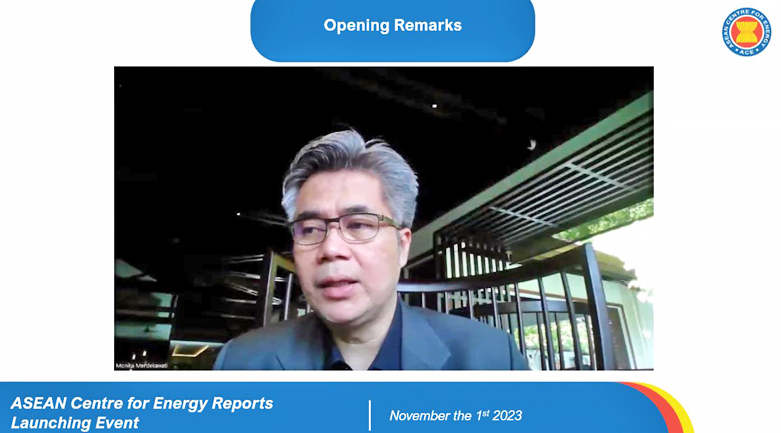ASEAN member states (AMS) need to curb the installation of additional fossil fuel capacity if it wants to achieve the 35 per cent renewable energy (RE) share in installed power capacity by 2025, according to the ASEAN Centre for Energy (ACE) in a series of new reports.
Earlier this month, the centre released several ASEAN reports including the ASEAN Energy Statistics Leaflet (AESL) 2023, the ASEAN Power Updates 2023 and the ASEAN Oil and Gas Updates 2023.
Providing a comprehensive overview of the regional power sector, the ASEAN Power Updates 2023 delivers valuable insights into the dynamic landscape.
The report highlights the distribution of installed fossil fuel capacity, tracks the evolving share of renewable energy capacity, and presents projections for ASEAN’s installed power capacity, grounded in the latest power development plans.
This snapshot serves as a vital resource for understanding the current state and future trajectories of power generation in the ASEAN region.
According to this report, the region boasts a total of 310 gigawatts (GW) of installed power capacity, with coal, gas, and hydropower making up the largest shares at 106.3GW, 89.6GW, and 61.2GW respectively.



“The dominance of fossil fuel capacity, influenced by delayed projects due to COVID-19 restrictions, has impeded the growth of renewable energy in 2022,” the centre revealed in a statement.
This has created a 1.71-per-cent gap from ASEAN’s 35-per-cent target of RE share in installed capacity by 2025.
“To achieve the target, it is vital for AMS to curb the installation of additional fossil fuel capacity and promote clean energy policies, with the aim of attaining a 38.5-per-cent share of renewable energy capacity by 2025.”
Based on the AESL for 2023, which presents a thorough and inclusive analysis of the energy landscape across the region through historical data spanning from 2005 to 2021, bioenergy consumption in 2021 surged by 23 per cent.
“While hydropower still make the largest contribution to power generation, geothermal and wind power generation reached their peaks in 2021 at 26.6 terrawatt-hour (TWh) and 3.7TWh, respectively.”
The third report, the ASEAN Oil and Gas Updates 2023 delivers a thorough evaluation of the present condition and emerging dynamics within the oil and gas sector across the ASEAN region.
The comprehensive report presents essential statistics and engages in in-depth discussions on the prevailing scenarios of oil and natural gas, providing valuable insights into the industry’s current landscape and future trends.
Based on the report, in 2022, the aggregate crude oil reserves of the 10 AMS experienced a 0.4-per-cent decline, paralleled by a more substantial 4.9-per-cent reduction in total natural gas reserves.
The downward trend persisted in oil and natural gas production as well, with respective contractions of 5.5 per cent and 6.1 per cent, continuing a trajectory observed since 2016.
“Notably, the region’s oil consumption exhibited rapid growth, surging by 5.8 per cent from 2021, resulting in none of the AMS being net oil exporters in 2022.”
High oil and natural gas prices, the centre continued, attributed to the energy crisis of 2022, which prompted several AMS to take immediate actions, such as cutting energy subsidies and prioritising domestic markets.
“Nevertheless, the soaring energy prices incentivised National Oil Companies (NOCs) in ASEAN to invest in exploration and infrastructure development.”
Additionally, collaborative frameworks were strengthened to ensure energy supply security and advance energy transition objectives.
“Initiatives like the ASEAN Petroleum Security Agreement (APSA), the Trans-ASEAN Gas Pipeline (TAGP) and the Methane Leadership Program (MLP) underscore the region’s commitment to navigating these challenges collectively.
“One of ACE’s missions is to serve as the region’s premier knowledge hub and data centre.
“The launch of these reports serves as a resounding testament to this commitment,” said Executive Director of ACE Dr Nuki Agya Utama, who emphasised the importance of these updates about the evolving energy landscape in the region.
“The ASEAN reports unveiled today mark a substantial milestone in our collective endeavour, working alongside the ASEAN Member States, to strengthen not only energy security but also affordability and sustainability within the region,” he added during his opening remarks.
“These reports provide important information for policymakers, industry experts, and energy enthusiasts to craft decisions that will profoundly influence the energy trajectory within our region.”
In his closing remarks Manager of Power, Fossil Fuel, Alternative Energy and Storage (PFS) Department at ACE Beni Suryadi, reiterated the importance of the reports in guiding the region towards a sustainable energy future.
“The data shared today reinforces the remarkable progress in ASEAN’s energy landscape.
We’re on track to surpass our renewable energy goals, and the resilience of the energy sector is evident with increased electricity generation and the completion of postponed fossil fuel projects.
“These insights offer a promising path to a more sustainable and secure energy future in ASEAN.” – Wardi Wasil






